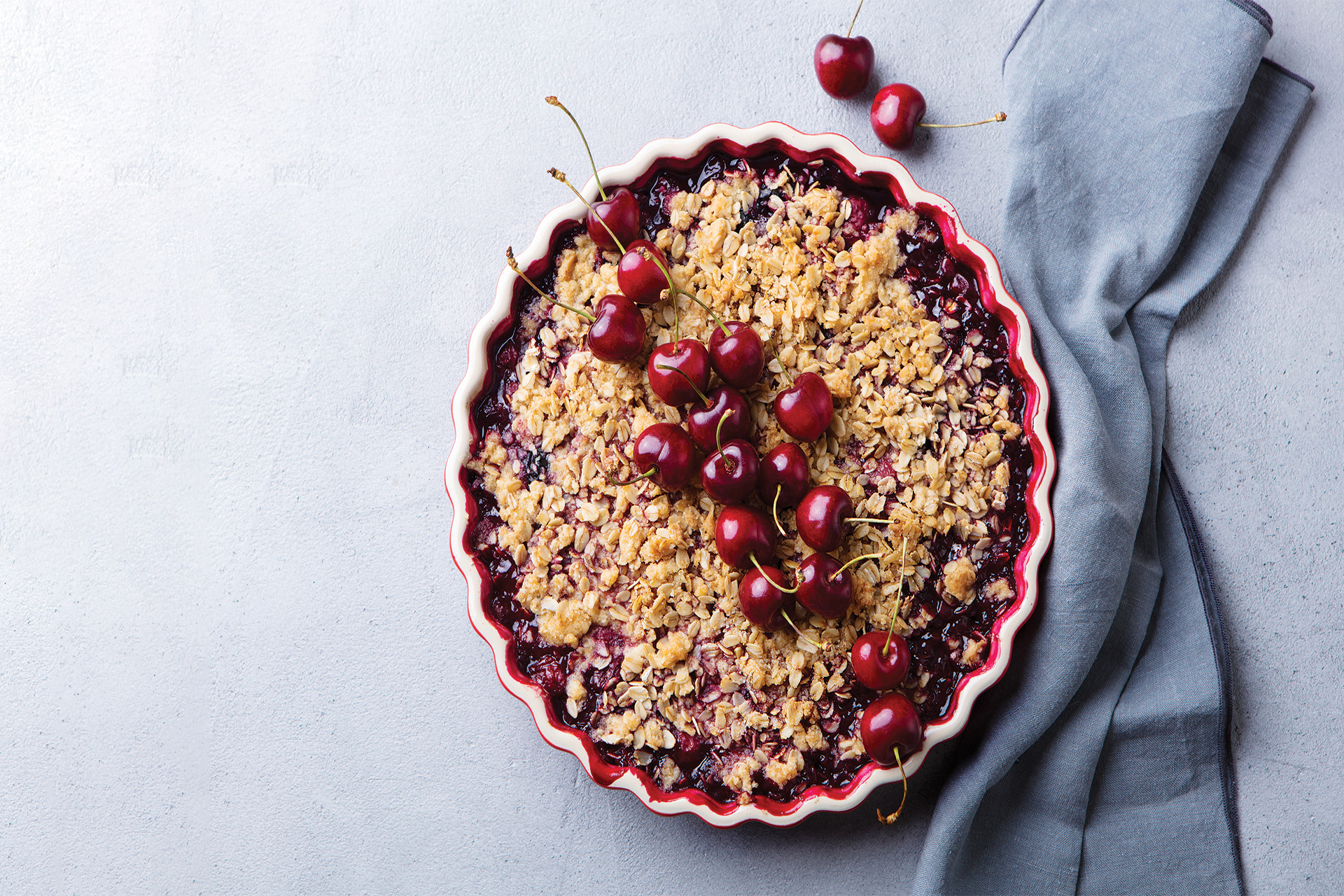As we emerge from the COVID-19 pandemic, consumers are eager to get back to “normal” life. That has meant a return to jam-packed schedules filled with ballgames and concerts, community gatherings, and nights out on the town with friends. But as much as people are relishing getting back to their event-filled lives, research suggests most consumers intend to maintain some of the health-promoting habits they adopted during the height of the pandemic, including cooking and eating more at home. Case in point: 71% of Americans who cooked more during the pandemic intend to keep doing so after the pandemic ends, citing budget savings and feeling healthier as motivating factors to keep dining in, according to a survey from the food marketing consultancy group Hunter (1).
Of course, people who are getting back to more go-go-go lives have less time to devote to cooking. Instead, they are looking to shortcut food products to help them get delicious, healthy meals on the table with less effort—and they’re not willing to sacrifice on quality for convenience. “COVID amplified people’s desire for real foods,” asserts Jill Bommarito, Founder and CEO of Ethel’s Baking Company. “Everybody’s in such a hurry and they’re looking for shortcuts, but they want products made with premium ingredients and a commitment to quality.”
While gourmet consumers continue to prioritize wellbeing, they also want to indulge. “The health-conscious gourmet consumer isn’t giving up alcohol or ice cream or baked goods—they’re not shying away from indulgences at all in fact. They’re just indulging with intention,” says Bommarito. “Consumers are making wise, meaningful selections. They’re choosing the better-for-you real food items that are going to satisfy their cravings.”
Desire for gourmet foods made with premium ingredients has caused sales to soar: The Speciality Food Association reports that sales of speciality foods hit $170.4 billion in 2020—up 13% from 2018 (2). And Research and Markets anticipates that demand will continue to climb, reaching $247.2 billion by 2025 (3).
Natural product retailers are in a prime position to capture a slice of that pie, since natural consumers prioritize clean-label products made with fewer (and recognizable) ingredients that taste homemade. For instance, Ethel’s specializes in gourmet gluten-free baked goods that appeal to everyone, regardless of whether they have to be gluten-free. As for the homemade taste? Bommarito notes: “You could be proud to call it your own if you want. No one would know the difference.”
Function is another draw. “Consumers seeking gourmet foods are demanding premium ingredients, but those premium ingredients must work harder for them,” notes Susan O’Brien, Founder of Hail Merry. “Not only do they need to deliver on taste, but they must also deliver on functionality.” Manufacturers are meeting this demand by fortifying products with plant protein and immune-boosting ingredients like functional mushrooms.
Sustainability is also top of mind for consumers. “More and more, consumers want foods that have been made in a way that aligns with their values,” points out Geraldine Kim, Co-founder and Owner of Sweet Action. “Food should be made in an environmentally conscious process with consideration given to the carbon footprint of gathering and distributing ingredients, supplies, and products, energy sources used in production, and use of recyclable or compostable packaging.” Sweet Actiona aims to meet this demand by running its operation on wind-powered energy, using compostable wares, recycling, and prioritizing fair wages and benefits for their team.
Novelty and joy of discovery are also big motivating factors in this category. “People want variety. They want surprise and delight. They want the thrill of the hunt,” says Bommarito. “Consumers are ready, willing, and able to try new flavors and products. The gourmet food market has never been hotter than it is today, and I think we’re going to continue to see it grow.”
5 More Trends Driving Demand
1) Reduced sugar:“Our research shows that consumers want to reduce their sugar intake as much as possible—even if it is natural sugar,” says Joshua Parker, Founder and CEO of Parker’s Real Maple. “One thing we did is launch a maple syrup blended with allulose to create a product that delivers on real maple flavor with 50% less sugar and 50% fewer calories.”
2) Allergen-friendly:“With the rise of consumers with special dietary needs, retailers who offer delicious products that use clean ingredients, manufactured in allergen-friendly facilities, will continue to add incremental value to the category,” says Matt Rink, Co-founder and VP of Sales at Every Body Eat. The growing popularity of charcuterie boards present an opportunity: He says his brand’s gourmet thins and crispbreads offer a tasty alternative to traditional crackers and are free of the top 14 food allergens, plus suitable for those on vegan, plant-based, Whole30, paleo, and adapted autoimmune disease diets.
3) International delights:Consumers want foods that can take them on a journey, says Stephen Caldwell, Founder and CEO of Swiss Rösti. “It’s about elevating the everyday experience and breaking down borders. People can go to the freezer section and you can get Swiss, Korean, German, and Italian specialities that cook up in 20 minutes or less. You can literally take a culinary journey around the world from the comfort of your own home.” Other trending international flavors, adds Rink, include “bold international cuisine that excite the palate, especially Latin and Asian flavors, such as chipotle, tajin, cardamon, and kimchi.”
4) Botanical:“I see a lot of botanical and exotic fruit inspired flavors, such as guava, passionfruit, dragon fruit, and ginger combined with more common flavors,” says Scott Frohman, Founder and CEO of Odyssey Wellness. “Botanicals that address mental performance, focus, stress, immunity, and sleep also are huge.”
5) Nostalgia with a plant-based twist:“We expect traditional foods with a twist to take off in the second half of 2022,” says Abby Thaine, Marketing Coordinator for Black Bird Foods, which offers the taste of artisanal, hand-tossed NYC pizza, but this one happens to be vegan. O’Brien adds that Hail Merry has grown “by offering familiar recipes with a sense of nostalgia, like Key Lime Pie, Sweet Potato Pie, and Chocolate Peanut Butter Cups, but healthified and plant-based with 50% lower sugar and lower net carbs.”
…and 3 Tips for Winning at the Sales Game
“Gourmet stores and sections usually cater to an educated, sophisticated consumer who is willing to spend more and take a chance on a new brand. They typically shop in these spaces because they want to see new, innovative products that they can’t find anywhere else,” advises Frohman.
The most important thing you can do to capture these consumers: Lean into stocking a variety of niche products. “Retailers should take a chance on smaller, emerging brands that are working hard to uniquely position themselves through packaging, shelf appeal, taste, function, and great in-store marketing promotions,” adds Frohman. “My advice: Include novel brands and see which ones gain traction, then streamline your offerings based on the ones that don’t sell through.”
Other smart marketing strategies:
1) Make callouts clear:”Research shows you only have 1½ seconds to get someone’s attention in frozen specifically,” says Caldwell. To help shoppers easily find products that appeal to them, clearly label benefits and create special sections for foods that fall into certain diet categories, like gluten-free and keto.
2) Encourage trial:COVID changed how stores and brands are able to approach sampling. Bommarito's advice: “If you can’t do traditional sampling, you’ve got to find another way to get the customer to try for the first time. We’ve done digital coupons and sent stores coupons for free or discounted product,” she notes. Brands may also find success in offering smaller, single- or snack-sized versions of their products that then encourage customers to buy the full-sized offerings. “Last year we launched a single-serve wrapped bar and it’s our fastest growing product,” says Bommarito. “What’s more, it’s increased our bigger tub sales by 55% over the same timeframe year over year.”
3) Offer semi-homemade meal ideas & recipes:People want to feed their families something that tastes and looks like an elevated homemade meal. Caldwell suggests displays of complimentary pairings or recipe ideas showing how to level up convenience products. “For instance, last week I took our Swiss Rösti filled with melty Swiss raclette cheese and made my family a gourmet benedict,” says Caldwell. “In four minutes you can whip up a couple poached eggs. You can make a quick hollandaise sauce from a packet. Top it with a few snips of chives and some flaky sea salt and for a restaurant-quality meal in under 20 minutes.”
For semi-homemade recipe ideas, check out our new “Let’s Bake Together” column, found on page 23 of this issue, and search “Let’s Bake” on our site for more delicious ideas. WF










